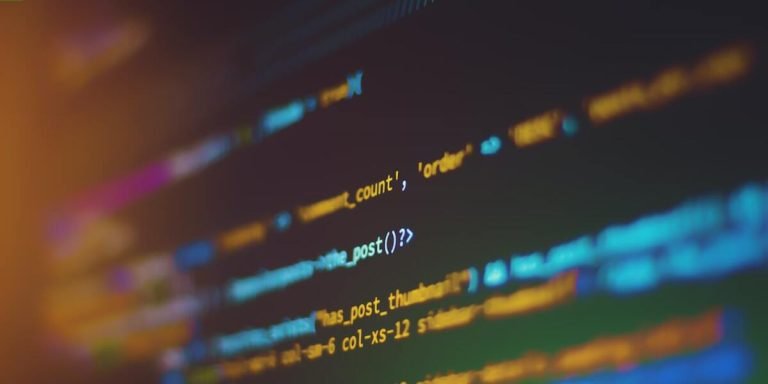Virtual Reality Classroom: A New Frontier in Childhood Education
The integration of technology in education is opening up exciting new possibilities, with the Virtual Reality Classroom being one such innovation. Over the years ‘virtual reality classroom’ has moved from just a speculative concept to an implemented practice that holds potential for transformative changes in childhood education.
This digital tool takes learning beyond traditional textbook methods by creating immersive and interactive experiences for young learners. It presents complex concepts as engaging visual content, making lessons more relatable and easier to understand. By combining curriculum-based instruction with virtual reality environments, educators aim not only to enhance teaching methodologies but also inspire lifelong learners who are technologically adept.
Did you know?
Did you know that Stanford University has a Virtual Human Interaction Lab where they research the implications of VR on childhood education, demonstrating significant increase in children’s understanding and retention of complex subjects?
The Evolution of Technology Integration in Education
In the evolving schema of education, technology is fast becoming a fundamental cornerstone. The introduction and development of cutting-edge applications are altering how instruction is delivered and received in our classrooms. Of particular note in this exciting renaissance period for learning methodologies has been the emergence of virtual reality (VR) as an instructional tool.
The onset from traditional chalk-and-board presentations to integrative tech-focused teaching methods weren’t accomplished overnight but through successive evolutionary steps marked by constant changes over decades. Initially, integration meant simply incorporating computer labs into schools or employing educational software on desk-bound PCs. However, advancements such as VR have now made it possible to engross students wholly into lessons with interactive experiences that breathe life into even the most mundane topics.
Virtual Reality Classroom forms part of what’s coined as Immersive Technology Integration- signifying tools which absorb students entirely within their learning process creating enriched environments where learners participate actively rather than passively consuming information. A clear leap from simple web browsing or typing exercises once considered groundbreaking aspects of digital education; indeed showcasing just how far we’ve traveled down the road towards integrating technology seamlessly in modern curricula.
Understanding the Shift from Traditional to Digital Classrooms
The transformation from traditional classrooms to digital ones is a fascinating journey. It reflects the evolution of technology integration in education over time, and how it has reshaped our approach towards learning.
In an era defined by rapid technological innovations, the term “virtual reality classroom” rings a bell for most educators worldwide. Once a constituent of science fiction movies and novels, virtual reality (VR) now finds its way into global educational settings thanks to advancements made in this sphere.
If we trace back history’s early years when blackboards were considered cutting-edge equipment for teaching sessions simply replaced with overhead projectors in later stages; one can affirm that integrating technology within school premises isn’t entirely novel idea. However, what sets today apart is scale at which these integrations are happening alongside their impacts on overall pedagogical processes.
Key Drivers for Integrating Tech into Educational Curricula
“Technology integration in education has evolved to become a core component of modern curricula worldwide. There are several key drivers contributing to this shift towards integrating tech into educational curricula, and one notable catalyst is the emergence of virtual reality classrooms.
Firstly, promoting digital literacy stands at the forefront. In today’s technology-driven society, being digitally literate is an essential skill for students’ future career success. By incorporating contemporary technologies such as virtual reality classrooms into normal teaching practices, educators can foster crucial tech skills among their learners from an early age.
Secondly, technology provides access to unlimited resources for learning. With just a few clicks on a device or through using engaging VR environments that span across academic topics and different world cultures; children have vast amounts of information at their fingertips.
Next comes personalized student learning—a trend burgeoning within pedagogy circles lately due its ability in addressing diverse learner needs effectively via adaptive programs which can tailor content according each individual’s pace strength area difficulty etc., thereby maximizing his/her potential growth throughout schooling years coupled up with consistent motivation boosters like achievements badges upon completion tasks/goals set by system itself all resulting one successful journey guided purposefully clear vision despite any possible hurdles ahead!
Harnessing Virtual Reality for Immersive Learning Experiences
The digital era has heralded remarkable advancements in many sectors, and education is not an exception. With technology integration becoming crucial to modern teaching methods, virtual reality classrooms stand out as one of the most innovative educational technologies available today. Using VR for immersive learning experiences isn’t just about simulating a physical presence in imaginary worlds; it’s about creating impactful pedagogical situations that can shape students’ approach towards knowledge acquisition.
Virtual Reality (VR) enables teachers to take their lessons beyond the confines of conventionally static curriculum material, transforming theoretical information into interactive and engaging scenarios where learners can dive deep into concepts they’re studying. For instance, history education takes on a new dimension when students are virtually transported back in time to witness events unfold firsthand rather than reading from a textbook.
Moreover, these extraordinary VR developments feed directly into differentiated instruction strategies widely adopted by educators worldwide. Virtual environments cater to various learning styles – be it visual or kinesthetic – ensuring every student finds an effective study method tailored specifically for them within this comprehensive system.
Despite challenges faced during initial implementation stages such as cost factors or technical skill requirements- schools which have successfully integrated virtual reality attest its transformative impact on classroom dynamics and overall teaching methodology landscape.
Enhancing Student Engagement with VR Technology
As we dive headlong into the 21st century, technology integration in education is no longer a novelty but a necessity. One such technological marvel making waves across classrooms globally is Virtual Reality (VR). VR provides an interactive and immersive learning experience that can bring about transformational changes within our educational infrastructure.
When employed effectively, VR has demonstrated profound impacts on student engagement – one of the key aspects of successful teaching-learning processes. Being able to ‘step inside’ simulations or virtual worlds makes topics more tangible and memorable for students than ever before.
Understanding concepts through textbooks often confine children’s understanding due to their inherent limitations; thus preventing them from visualizing real-world applications practically. The use of a virtual reality classroom replaces these traditional methods by providing learners with hands-on experiences, turning abstract ideas into vivid realities they can manipulate and explore.
Real-World Applications of Virtual Reality in Modern Classrooms
The incorporation of virtual reality in education is not just a figment of futuristic imaginations anymore. It’s happening now, and its real-world applications are enhancing learning experiences like never before.
Virtual Reality (VR), an immersive technology that transports users into various simulated environments, is steadily revolutionizing modern classrooms. The keyword here being “virtual reality classroom.” This transformation highlights the progressive shift towards a more interactive and engaging form of teaching – making complex curriculum concepts easier to understand for students from different age groups or academic backgrounds.
One exemplary application of VR in education can be seen through field trips which no longer need physical displacement. Now teachers can take their students on exploratory journeys across space-time continents with Smithsonian Virtual Adventures without worrying about logistics or exposure risks!
Another noteworthy instance lies within medical training where aspiring surgeons use advanced VR simulations for practicing intricate surgeries beforehand; thereby reducing error margins considerably during actual procedures while also fostering self-confidence among budding professionals.
Meanwhile, scientific phenomena difficult to imagine such as black holes or atomic structures become graspable thanks to sophisticated virtual tours available at the learner’s fingertips.
In unprecedented times like these— when distance learning has nearly replaced traditional methods due to global crises— tools resembling ‘virtual reality classrooms’ have proven valuable assets offering uninterrupted quality education despite obstacles.
Overcoming Challenges Associated with Implementing Virtual Classrooms
Implementing virtual classrooms is the next significant step in educational technology integration. Still, it’s not without challenges. Recognizing and overcoming these hurdles can empower both educators and students to seize every opportunity from this promising innovation.
The first challenge that many schools face when implementing a virtual reality classroom relates to cost-effectiveness. A full-scale deployment of VR equipment requires a hefty investment which may be daunting for budget-constrained institutions. However, with careful planning around procurement strategies and potential funding sources such as grants or public-private partnerships, financial constraints can be mitigated while still achieving quality VR education experiences.
Another common hurdle stems from technical issues concerning hardware reliability and software usability within the classroom setting. This includes ensuring consistent high-speed internet connectivity essential for smooth-running VR applications across multiple devices simultaneously used by different users —a task requiring robust IT support systems in place.
Lastly, there exists a pedagogical concern: how should traditional teaching methodologies adapt into this new paradigm? Teachers must undergo sufficient training sessions not only on how to technically operate these systems but also effectively intertwine them with academic lessons conducive for immersive learning environments like Virtual Classrooms offer.
Despite these challenges though, adopting virtual reality classrooms promises transformative benefits impacting student engagement rates positively along with enhanced understanding comprehension levels among educands—making it an exciting frontier worth crossing over amidst its difficulties.
Identifying and Addressing Technical Obstacles in Schools
In the current educational landscape, technology integration has become key. As schools are adopting progressive teaching modalities like virtual reality classrooms, they often encounter a myriad of technical obstacles.
Secondly, many educators face difficulties in mastering sophisticated technologies involved with setting up virtual reality classrooms. There can be a steep learning curve associated with managing digital tools which may hinder smooth instruction delivery.
Thirdly is navigating around data security threats that come alongside an increased usage of online platforms for education. It’s crucial for every school implementing modern tech-based modes of education to devise stringent safety measures protecting students’ personal information from potential cyber-attacks.
Ironically enough though, as daunting as these challenges might seem at first glance – there lie equally powerful solutions available today too!
To address poor internet connections issue; various global initiatives have started working towards making quality broadband accessible universally – especially focused on rural regions looking toward integrating advanced technological facilities such as VR modules into their curriculum effectively despite geographical constraints.
Training Educators to Effectively Use VR Tools
Implementing technology in education, particularly virtual reality (VR) classrooms presents its unique challenges. One significant hurdle is ensuring that educators are adequately trained to utilize these VR tools effectively and seamlessly integrate them into their teaching methodologies.
A profound knowledge of the potential value of a tool significantly enhances that tool’s use efficacy. Therefore, expending resources to provide an essential training program on virtual reality classroom use for teachers becomes paramount even before any integration process begins.
This training would typically commence with familiarizing educators with the basics of VR equipment operation – turning it on, setting up experiences and troubleshooting common issues. Additionally, it should encapsulate modules that cater specifically to using VR for educational purposes; some examples being how different subject matter could be simulated virtually or hands-on practicals such as science experiments conducted in a risk-free environment facilitated by this groundbreaking tech.
Next comes understanding how best they can judiciously incorporate a relatively new teaching medium like Virtual Reality without drastically disrupting existing curriculum structures while still synergistically complementing traditional learning methods. For instance: when best during classes to introduce various elements within virtual stimulations? How long each session should ideally last for optimal information retention?
The significance here lies not just in tutors mastering operational aspects but also comprehending pedagogical benefits associated with integrating this modern approach into classic models correctly – because only then will virtual reality classrooms become more than merely immersive headsets posing additional distraction possibilities pupils could misuse rather than beneficial tools stimulating interactive learning among children navigating through 21st-century digital landscapes.
Conclusion
In the realm of education, it is becoming clear that a virtual reality classroom isn’t just flashy tech – it’s a deeply immersive learning experience that has strong potential to revolutionize how children are educated. It champions interactive and engaging learning experiences over traditional methods, thereby making childhood education not only more effective but also remarkably fun. And in this swiftly changing world where technology permeates all aspects of life, preparing our young by integrating such advanced tools into their educational journey seems nothing short of necessary.
So whether you’re an educator seeking to bring innovation into your teaching methodologies or a parent eager for efficient ways to enhance your child’s learning process, don’t hesitate in considering the prospect offered by VR classrooms. We encourage you to explore our website further; we carry loads more information regarding modern approaches towards educating children along with ample resources and support structures for parents and educators alike. The future calls – let’s ensure together we answer aptly prepared!







